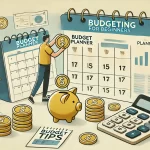I’ve been there. The feeling of dread when you can’t pay rent. The sleepless nights worrying about bills. It’s a hard feeling, but help is out there.
The world of crisis relief funds can seem scary. But it’s a lifeline when you’re in a tight spot. There are government programs and local charities ready to help. Let’s look at some of these important resources together.
Did you know the U.S. Treasury has given over $46 billion to Emergency Rental Assistance programs? This huge effort has helped millions of families. It shows there’s support for those struggling financially.
If you’re facing eviction or need help with bills, there are programs for you. From SNAP benefits to energy help, these resources can offer hope. They can be the difference between feeling lost and finding a way out.
Key Takeaways
- Emergency Rental Assistance programs have provided over $46 billion in support
- Over 10 million assistance payments made to renters facing eviction
- Low-income renters and renters of color have received targeted support
- ERA covers rent, utilities, and other housing-related expenses
- Additional programs available for food, energy, and other urgent needs
Understanding Emergency Financial Assistance
Emergency financial help is a lifeline for those in sudden economic trouble. I’ve seen how quick cash help can change lives in hard times. Let’s look at what counts as a financial emergency and the aid available.
What qualifies as a financial emergency?
A financial emergency is when you face unexpected costs or lose income. This can be job loss, medical emergencies, or natural disasters. Did you know 57% of Americans can’t handle a $1,000 emergency? That’s why budgeting is key for staying financially stable.
Types of emergency financial aid
There are many types of short-term financial aid:
- Rental assistance
- Food support programs
- Utility bill help
- Medical expense aid
- Unemployment benefits
How to assess your immediate needs
When facing financial trouble, it’s crucial to know what to prioritize. Here’s a quick guide to help you:
| Need | Priority | Potential Resources |
|---|---|---|
| Housing | High | ERA programs, Community Action Partnership |
| Food | High | SNAP, Food banks (60,000+ in Feeding America network) |
| Utilities | Medium | United Way’s 2-1-1 |
| Medical | Varies | Charitable clinics (1,400+ nationwide) |
| Transportation | Low | Local non-profits, community programs |
Remember, economic distress relief programs are here to help. By knowing your options for financial hardship aid, you can better handle tough times.
Government-Sponsored Emergency Rental Assistance
The government helps those facing housing problems. The Emergency Rental Assistance (ERA) program is a big help. It’s part of disaster aid and hardship relief.
Treasury’s Emergency Rental Assistance Programs
The U.S. Treasury gave a lot of money for ERA programs. In 2020, $25 billion was given for ERA1. Then, in 2021, $21.55 billion was given for ERA2. These funds help prevent evictions and support those in financial trouble.
Eligibility Criteria for Rental Assistance
To get ERA, you must meet certain rules. If you earn 50% or less of the area’s median income, you’re a priority. Also, if you’ve been unemployed for 90 days or more, you’re given extra help. This makes sure emergency loans and aid go to those who really need it.
How to Apply for Emergency Rental Aid
How to apply for rental aid varies by place. Many programs are run locally. For example, in Maryland, local places and property managers handle applications. It’s important to check your area’s rules. Some places have short application times, so it’s crucial to apply on time for hardship relief.
| Program | Status | Eligibility Focus |
|---|---|---|
| ERA1 | Active | Low-income renters |
| ERA2 | Active | Unemployed individuals |
| Local Programs | Varies by location | Area-specific criteria |
Nutrition Assistance Programs
Nutrition assistance programs are key for those in urgent need. They offer food help, keeping families fed during hard times.
The Supplemental Nutrition Assistance Program (SNAP) is a big help. In 2011, it helped over 46 million people, costing more than $75 billion. It started in 1939, helping about 4 million monthly at its peak.
The Emergency Food Assistance Program (TEFAP) is also important. It gives free food to low-income people, including the elderly, in all 159 Georgia counties. This ensures nutritional support for those needing emergency cash.
TEFAP is fair to everyone. They don’t judge based on race, color, or disability. They offer help in many languages and formats, like Braille or American Sign Language.
If you’re in a financial crisis, these programs can help. They offer short-term support to keep food on your table. Help is out there – you just have to ask.
Unemployment Benefits and Temporary Assistance
When you’re in financial trouble, knowing where to get help is key. I’ll show you how unemployment benefits and temporary help can offer crucial support during hard times.
Unemployment Insurance Eligibility and Application
Unemployment insurance gives quick cash to those who’ve lost their jobs. In California, Pandemic Unemployment Assistance (PUA) helps workers who usually don’t get UI benefits. This includes those with fewer hours because of COVID-19. Applying is easy, and you can get up to 59 weeks of help, with an extra $300 a week from the feds.
Temporary Assistance for Needy Families (TANF)
TANF is a big help for those in need. It covers food, housing, energy, childcare, and job training. To get it, you must do certain work activities set by your state. TANF is only for a short time, up to five years, to help you get back on your feet.
COVID-19 Related Unemployment Extensions
The pandemic led to extra help and loans. The Golden State Stimulus gives one-time payments of $600 or $1,200 to low-income families. Also, the Advance Child Tax Credit Payments send half the credit amount each month, starting July 15.
| Program | Eligibility | Benefits |
|---|---|---|
| Unemployment Insurance (UI) | Job loss, reduced hours | Up to 59 weeks, $300 weekly supplement |
| TANF | Low-income families | Food, housing, job training assistance |
| Golden State Stimulus | CalEITC recipients, ITIN filers | $600 or $1,200 one-time payment |
Emergency Financial Assistance for Housing
Housing costs can be very hard to handle when times are tough. Luckily, there are emergency grants and short-term help programs. The Emergency Rental Assistance program gives quick cash for rent and utilities to keep families in their homes.
FEMA offers different kinds of housing aid. They help with rental assistance, home repairs, and even temporary housing in some cases. For those facing big challenges, state programs help with energy costs, weatherization, and essential repairs. These efforts aim to give immediate cash help when you need it most.
I was surprised to learn about the Emergency Housing Vouchers (EHVs) program. It’s for people who are homeless, at risk of homelessness, or fleeing danger. Public Housing Authorities have 70,000 vouchers to give out. If you’re in a tough spot, it’s worth looking into. Remember, smart money-saving strategies can help stretch your budget while you’re getting back on your feet.
Don’t forget about other resources. The Earned Income Tax Credit can give temporary relief to needy families. There’s also help for burial costs and relocation expenses under certain conditions. The key is to reach out and explore your options. With these programs, you can find the support you need to keep stable housing during financial emergencies.
In conclusion
Emergency financial assistance programs can provide crucial relief during difficult times, offering help with housing, utilities, and basic living expenses. Understanding the available options and applying promptly can make a significant difference in overcoming financial hardships.






